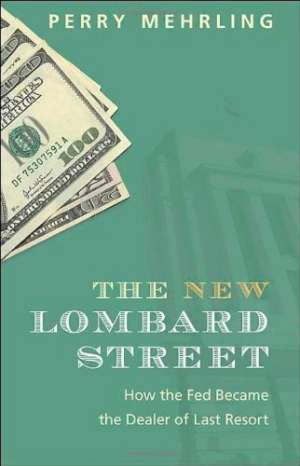16 June 2011
The New Lombard Street
How the Fed Became the Dealer of Last Resort
Perry Mehrling
2010, Princeton University Press, 174 pages, £20.96
ISBN 9780691143989
Reviewer: Larry Hatheway, Chief Economist, UBS Investment Bank

Titles of books are funny things. In theory, they succinctly convey the content. Yet in the case of Perry Mehrling’s latest book, The New Lombard Street: How the Fed Became the Dealer of Last Resort, the title doesn’t quite do the content justice. To be sure, Mehrling comprehensively reviews how the Fed responded to the financial crisis by expanding its remit beyond lender of last resort to a liquidity supplier for a myriad of financial institutions, across capital markets as well as national borders. In doing so, Mehrling does not only describe how the Fed’s operations and tools changed. Even more, he deftly traces the conceptual origins of the Fed’s crisis response through its own history, as well as back to the guiding principles of nineteenth-century central banking as articulated by Walter Bagehot and practised by the Bank of England.
That analysis alone would deserve praise, particularly in such a slender volume. But even more impressive – and not adequately foreshadowed in the book’s title – are Mehrling’s insights into the origins of the financial crisis. In ways few observers have dared, Mehrling identifies the origins of the crisis in the flawed assumptions of post-war macroeconomic, monetary and finance theory. With an economy of language and free of jargon, Mehrling moves easily between the disciplines of economics and finance, zeroing in on the critical assumptions that market participants and central bankers ignored, ultimately at extraordinary cost to themselves and society at large.
Crucially, Mehrling avoids the temptation to view the crisis as simply the outcome of bad judgment by reckless borrowers and lenders. Mehrling is more interested in how crises of such proportions can occur in a world of supposedly efficient markets and rational agents. He is also curious about how such ultimately destructive behaviour could escape detection of the best minds in economics, finance and policy-making, at least until it was too late. Partly, in his view, that is because post-war macroeconomics became obsessed with endless debates between neo-classical and Keynesian economics, in the process ignoring the insights of Hawtrey and Minsky that proved to be so prescient about the destabilizing nature of speculative investment.
The book’s flaw – admittedly a minor one – is Mehrling’s use of ‘t-accounts’ to illustrate the concepts of fractional reserve banking, inter-locking credit markets, and the impacts on the Fed’s balance sheet of its various interventions as it sought to manage the crisis. They are a tool fit for textbook economics, not for a monograph otherwise written in clear and concise prose. Still, the quibble is minor one. This is an excellent and accessible analysis for anyone wishing to understand the origins of the financial crisis and how the Fed came to respond as it did.
